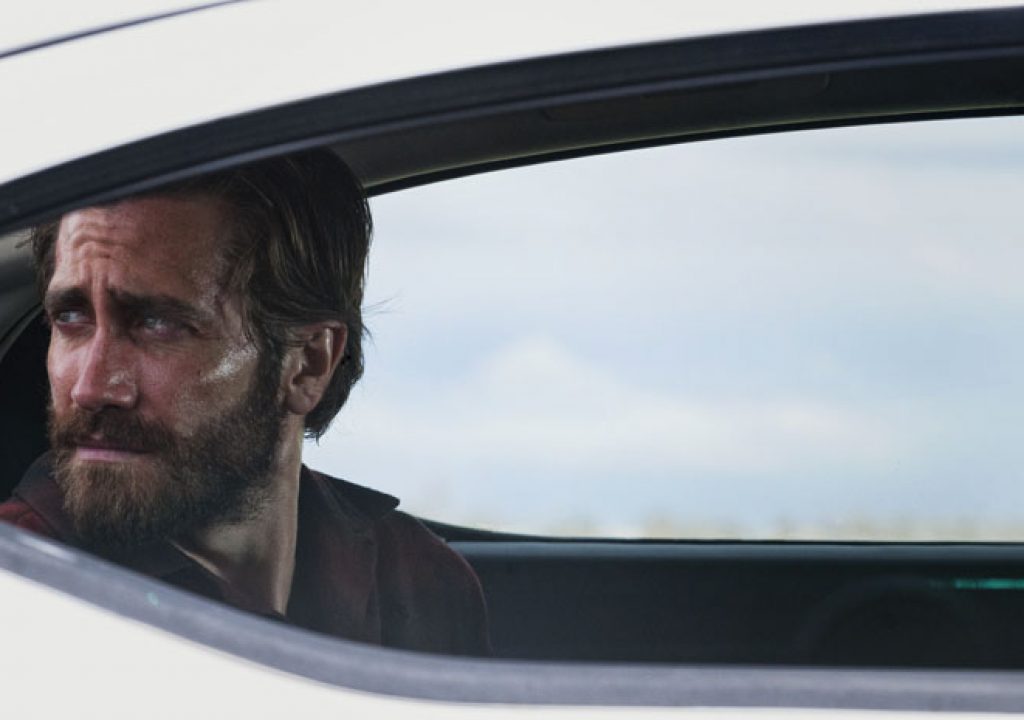Joan Sobel, ACE began as first assistant on such films as both of Quentin Tarantino’s Kill Bill films. She then transitioned to the editor’s chair with 2002’s Oscar winning short The Accountant and the 2005 feature film, The Quiet, followed by a steady string of work including A Single Man, Admission, and The Perfect Guy. Our interview today is about her work on Tom Ford’s haunting Nocturnal Animals.
Hullfish: What did you do to keep from being overwhelmed by the subject matter, which in certain parts is a little dark?
Sobel: I find the subject matter to be fascinating. Anything that has to do with human nature, human behavior is incredibly fascinating. It’s can be dark at times but there are different, compelling layers of stories in “Nocturnal Animals” that end up merging into one. It’s not just unrelenting darkness. Also with Tom, it’s so much fun working with him and he has such a great sense of humor that we spend a lot of time laughing. Yes, it’s a tale of revenge and it’s a tale of regret but, it also contains themes of love and heartbreak and hopes and dreams that have impacted all of us at one time or another. It is very human.
Hullfish: That’s true. There are just parts that I found a little disturbing, as a father and husband.
Sobel: When you read a Grimms fairy tale they are not usually the happiest of stories. They are almost always very, very dark. And I’ve always felt this way about “Nocturnal Animals,” that this is like a very dark fairy tale.
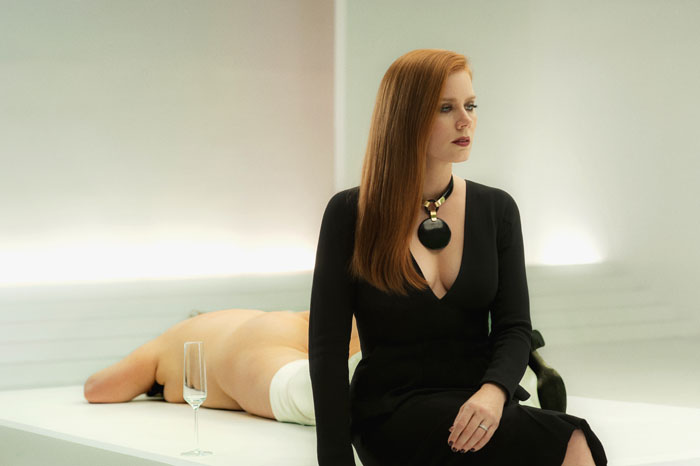
Credit: Merrick Morton/Focus Features
Hullfish: Sure. You mention your collaboration with Tom and that you laughed a lot. Talk to me about a little about that collaboration and how you guys work together. What kind of method or relationship did you guys develop as you work?
Sobel: Well, the way we work is I put together the editor’s cut while Tom is shooting the movie. I create a very tight, polished cut so that Tom has a very solid foundation full of ideas to work from. The story is there. The rhythm, the flow, it’s all there. When Tom comes in, we start from the beginning, using the editor’s cut as our base, and we work our way through the movie. We talk a lot in the cutting room. We’re passionate about movies and we have a continuous dialogue, sharing movie references and conversations between us that literally erupt in the cutting room out of sheer joy. Some idea will come up and I’ll mention some movie and then Tom will say, “Oh my god, yes!” And then he’ll reference another movie. We are intense in the cutting room. We laugh. It’s a wonderfully creative endeavor and Tom is a genius and a joy. He’s such a creative genius in every aspect of his life. Concurrently, he is also drawn towards collaboration. He’ll come up with an idea; I’ll come up with another one and he’ll come up with another one and it just keeps going into the stratosphere. Probably the best experience anybody in our business could have, and I consider myself very lucky because of it.
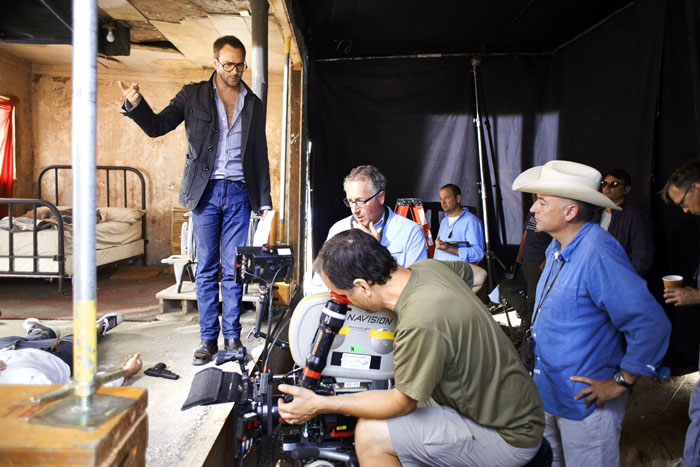
(l-r.) Writer/Director Tom Ford along with assorted crew members and Cinematographer Seamus McGarvey plan out a scene on the set of the upcoming romantic thriller NOCTURNAL ANIMALS, a Focus Features release.
Credit: Merrick Morton/Focus Features
Hullfish: I love that. Editor’s need to have both a strong ego and sense of opinion and creative objective but also to be able to subvert that or let that be subverted to the vision of the director. You need both.
Sobel: You do. It’s the director’s vision. Ultimately, we are there to support that vision and to bring ideas and everything possible that we can to that vision. You hope that you have some kind of a symbiotic relationship with your director, and an intuition that guides you even when your director isn’t there, when he’s off shooting the movie. When I’m putting things together I instinctively know where Tom wants to go, even without discussing everything with him, because you usually don’t get to have much communication while the director is busy shooting the movie. I usually understand the direction that Tom is going in, his intent, so when I am putting together the editor’s cut, I’m guessing that 80-90% of the time I’m usually right on or at least in the ball park. I think that there are so many director-editor relationships that are maintained over the years because of this intuitive link between them, this instinctive ability of an editor to know where the director wants to go with a scene. The ones that we are very familiar with, like Martin Scorsese and Thelma Schoonmaker, and certainly when I worked with Sally Menke (I was Sally’s First Assistant Editor for 6 ½ years), Sally and Quentin Tarantino. There is some connection between these editors and directors; almost a psychic connection where they really understand each other. It’s a very special, almost magical relationship.
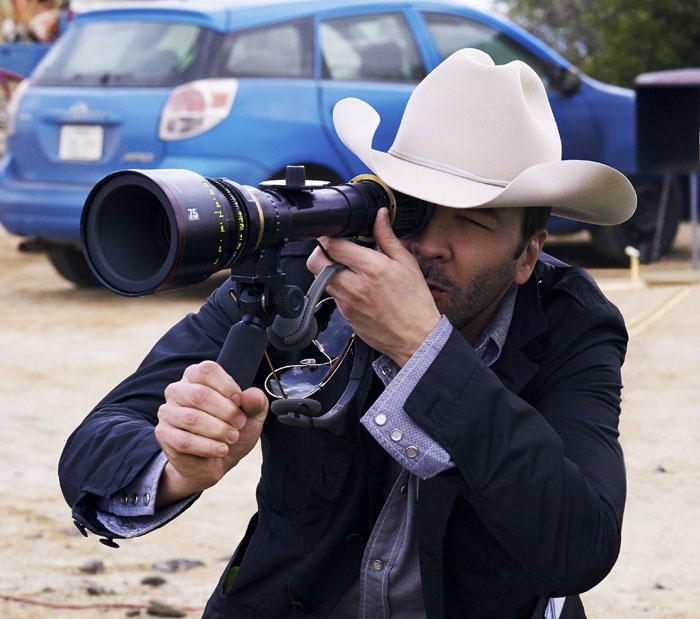
Writer/director Tom Ford on the set of his romantic thriller NOCTURNAL ANIMALS, a Focus Features release.
Credit: Merrick Morton/Focus Features
Hullfish: Tell me a little about how you knew what he wanted to begin with. How did you know that you would have a symbiotic relationship?
Sobel: I had already worked with Tom. I edited “A Single Man” with him.
Hullfish: Sorry. I should have known that. So tell me about getting the gig on “A Single Man” and how that relationship started.
Sobel: I got the gig with Tom on “A Single Man” through a basic interview process. I didn’t know him. He didn’t know me. I came in for an interview along with a number of other people, and I could tell as soon as we were talking that there was some kind of a connection between us. I just felt it. I think it was our movie references, because we love movies, old movies, foreign movies…. and are both really, really passionate about them. I think that might be why Tom hired me?
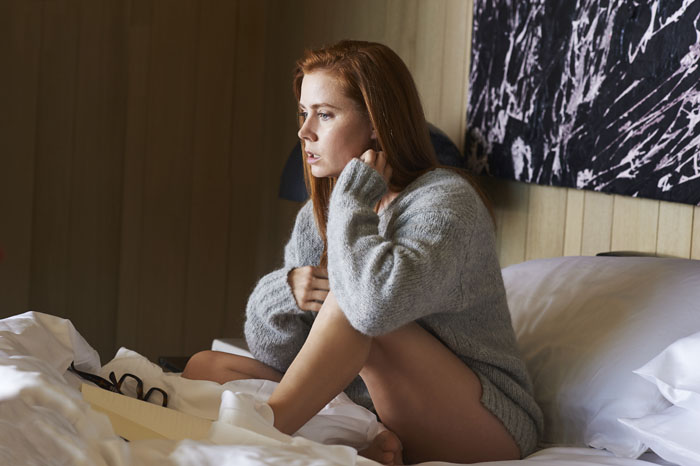
Credit: Merrick Morton/Focus Features
We also have similar musical tastes. Together, we placed the temp music in “A Single Man.” We also placed the temp music in “Nocturnal Animals” and again, there is some kind of aesthetic that we understood with each other which makes the whole process in the cutting room very natural, very easy.
We actually shot “Nocturnal Animals” in 31 days, which is pretty crazy that it was only 31 days. That’s an extremely short schedule for a movie this big in scope. I was originally supposed to have two weeks for the editor’s cut and I only got one, but I was done. We went to London in the beginning of January and started the director’s cut and by the end of March, we were pretty much picture locked. I think we made a few changes after that but, not many. Still, “Nocturnal Animals” was an incredibly complicated movie to put together.
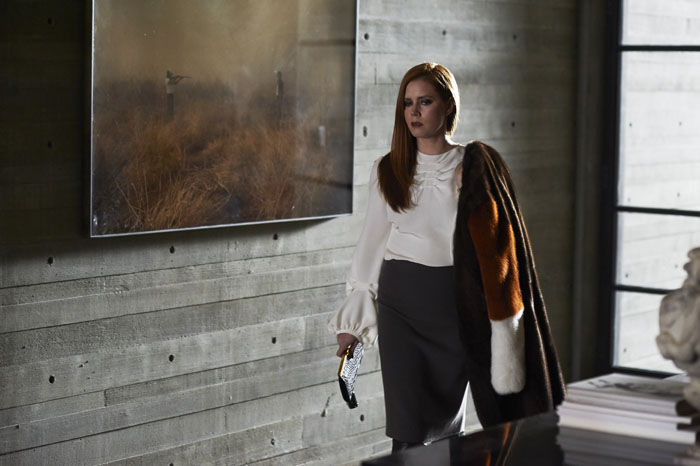
Credit: Merrick Morton/Focus Features
Hullfish: Talk to me a little bit about the complexities of cutting “Nocturnal Animals” together. For those who haven’t seen the movie, there are a lot of interconnecting parts and different time frames that are going on. How close was the final movie to the script as far as a lot of that intercutting and keeping things alive?
Sobel: Tom wrote an amazing script. It was so well written and we followed the script closely. However, once you get into the cutting room – what works in the script does not necessarily flow in the film. They are two different beasts. We experimented a lot with the transitions between the 3 storylines: Susan’s current life, Susan’s past life, and the novel that she is reading. Some of these transitions were quite obvious, as Tom had built them into his script, but others required a different, more fluid approach. Sometimes, I used sound to transition in and out of the fictional novel, or between Susan’s life in the present and Susan’s life in the past. Sometimes, it was a gesture on the part of the actors, sometimes it was a camera move, or some movement within the frame. It was discovering which rhythm worked properly between scenes and within the movie, and about juxtaposing images. That’s the fun of editing. This is a movie that is truly about editing, and in so many aspects it’s about the art of editing. And in many ways it’s also about movies, in and of itself.
Hullfish: How is “Nocturnal Animals” about movies?
Sobel: I hope and feel that the experience of watching “Nocturnal Animals” provides those heightened emotions, that passion that I had growing up and still have about movies; that somehow the movie itself changes you for a short time, when you leave a movie theater feeling slightly different about yourself and your surroundings; that magical thing about movies that stimulates your mind and your soul. Movies are truly like a dream for me. And “Nocturnal Animals” is like a dream, or a nightmare.
Hullfish: A little of both right?
Sobel: It’s the stuff that dreams are made of. There are a lot of movie references in “Nocturnal Animals,” not with the specificity that Quentin Tarantino uses movie references, where you can go back to the movie he’s referred to and see the parallels. It’s more of the feel of certain movies that Tom and I are drawn to. Obviously, there’s Hitchcock…our love of Hitchcock. The obsessions that run through “Nocturnal Animals” reference Hitchcock; the watching, the observing. The use of color to link images and emotion. But there’s also Kubrick and Bogdanovich’s “The Last Picture Show” which was something that we referred to for sound design and “The Good, The Bad, and The Ugly.” And “Red River” in the relationship between Michael Shannon and Jake Gyllenhaal, in the exploration of what it means to be a man, society’s definition of strength and weakness.
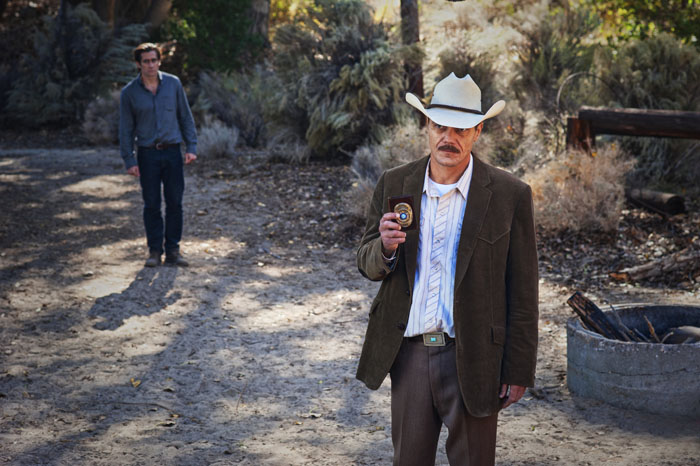
(l-r.) Academy Award nominees Jake Gyllenhaal and Michael Shannon star as Tony Hastings and Bobby Andes in writer/director Tom Ford’s romantic thriller NOCTURNAL ANIMALS, a Focus Features release.Credit: Merrick Morton/Focus Features
Hullfish: You had so many pieces in this movie that you could conceivably move around. How did you organize the project? Or how did your assistants organize the project? And how do you like to see dailies? How do you like to have your bins organized so that you have the best approach to a scene a when sit down to it?
Sobel: I know that some editors like to use scene cards on a wall or they use the script integration tool and I don’t use any of those things because for me editing is truly intuitive. It’s like painting, a creative process that is very difficult for me to put into words. I don’t make selects, I don’t do any of that. I ask my assistants to organize my bins in frame view and then re-arrange the tiles in the order of the script, according to the set ups. Then as I edit, I concentrate on the performances.
Hullfish: Once you have that organization done in frame view, do you always start from the beginning of the scenes or sometimes do you find a moment mid-scene that you work from?
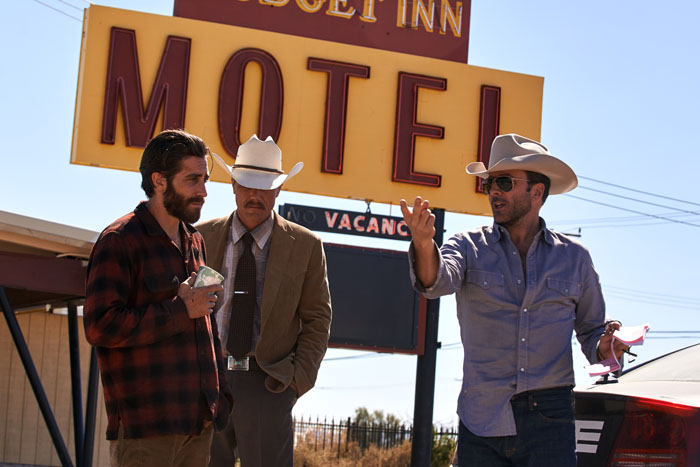
(l-r) Academy Award nominees Jake Gyllenhaal and Michael Shannon get direction between takes from Writer/director Tom Ford on the set of his romantic thriller NOCTURNAL ANIMALS, a Focus Features release.
Credit: Merrick Morton/Focus Features
Sobel: No, I do not necessarily start from the beginning of a scene. First, I will watch all of the dailies for a scene. I watch everything, because to me, the performance is supreme. And there can be some little nuance that an actor does that can make the scene. I know I want to get to that, because that’s actually the most telling part of the scene. If I don’t watch everything then I won’t see it and that means even watching everything that comes before the slate and after they yell cut, because you don’t know what wonderful moments you might find there. This process takes an enormous amount of time. I also take copious notes and place markers at certain moments that I want to get to within a take. I watch each take to mine the emotion, to discover the remarkable places that the actor is taking you. When I’m watching dailies and cutting together a scene, it can be a bit embarrassing if you happen to step into my cutting room because I’m probably going to be laughing with the actors, or crying, or feeling what is being conveyed, because if I don’t feel it then nobody else is going to feel it and that’s how I choose which moments, which pieces go into the cut. It doesn’t necessarily mean that I’m going to start from the beginning of a scene. It’s trying to uncover the most significant moments of the scene, those emotional beats that tell you what the scene is about, where the characters are going, the beats that provide the flow and the rhythm of the scene. As everything is shot out of sequence in a movie, you as the editor have to constantly keep in mind: Where is the scene going? What’s coming before this scene? What’s coming after this scene? Where and what is the significance of this scene within the placement of the entire movie? So editing is a cerebral, an intellectual and emotional challenge; it’s about making decisions literally every second.
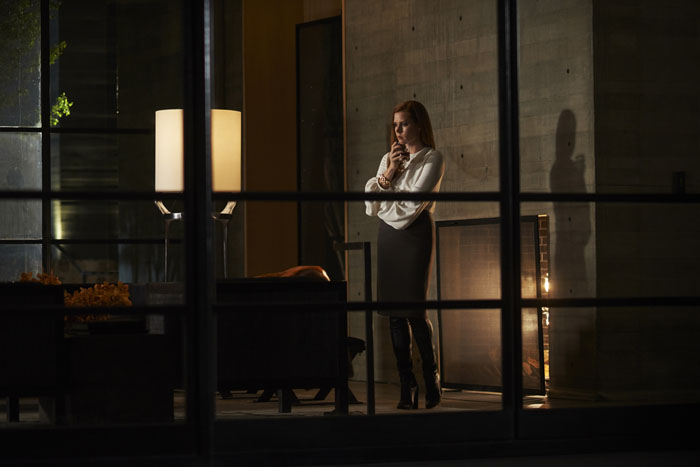
Credit: Merrick Morton / Focus Features
Hullfish: There is a flashback scene of Amy Adams’s character remembering her first dinner with her ex-husband. And the little micro-expressions that play over her face really told you what she was thinking. Are you hyper-sensitive to those minute changes in expression?
Sobel: Yes I am. I’m a nut in that way.
Hullfish: A nut in a good way. People think of an expression as a smile or as a frown or something but there is the smallest twitch on the corner of an eyebrow or the cheek muscle…
Sobel: Yes, and yes, and yes. I look for that. Especially with someone like Amy Adams. I always thought that she was a wonderful actor, but once I actually was editing her and seeing her dailies, what Amy brings is amazing. It’s as if you can see what she’s thinking behind those enormous blue eyes of hers. And there’s some kind of a flicker than can run through her eyes or a look or just the tiniest of nuances. In the scene with Michael Shannon and Karl Glusman who plays Lou – when they’re in a police station and Bobby is tormenting Lou and Lou is up against the wall. And Karl had this little twitch in his cheek that was so perfect as Michael was leaning into him and really terrorizing him. That was an involuntary twitch that Karl just happened to have in that take and I was so happy when I saw it! There are all these little moments, these brilliant moments. For instance, in the flashback scene between Jake and Amy when they are young and falling in love and they have that dinner, the New York dinner. There are so many moments in that scene when we stay on their faces and they’re not saying anything but….they’re saying everything with a glance or a blink or a smile or a tiny gesture. I am literally hyper-sensitive to it yes.
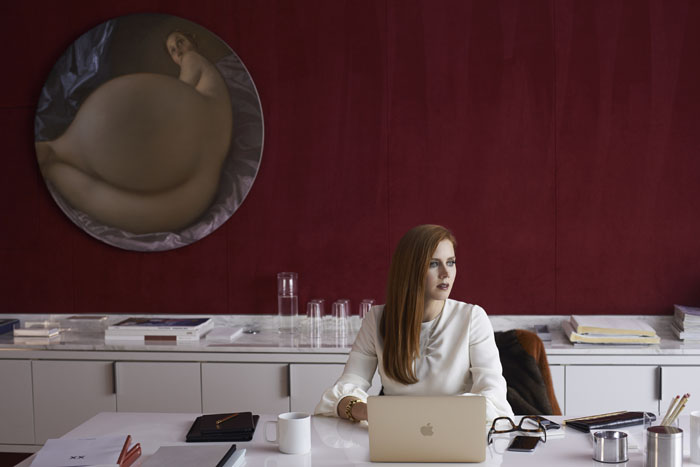
Credit: Merrick Morton/Focus Features
Hullfish: Joe Walker, who cut Arrival, said about Amy that there was not a single take where she was not true.
Sobel: Yes, Joe has described Amy perfectly. And it’s so interesting with Amy because there might be a couple of takes where for her it wasn’t true. Instinctively she knew right away when she felt like she wasn’t there. She always gives one hundred and ten percent. Julianne Moore is like that also. Julianne can even be talking with her fellow actor right up until action and then boom, she’s completely there. It’s amazing, really amazing to watch both Julianne and Amy work. Susan is a very difficult role as she really doesn’t have much dialogue. For the most part Susan is thinking. It’s an internal monologue, and that monologue has to be conveyed through Amy’s face, like a silent movie. We’re seeing everything through her eyes. As Susan is reading Edward’s novel, it’s her interpretation of that novel that you are witnessing. So, being able to convey that was quite a challenge and thank goodness we had Amy Adams in that role!
Hullfish: Do you remember the montage surrounding Amy Adams asking her husband, “Why are you driven to write?”
Sobel: It’s the shower montage.
Hullfish: Talk to me a little bit about putting that together and just the pacing of it, the decision of shots, I was struck by that montage when I watched it.
Sobel: That was a challenging montage. The intercutting between Jake and Amy was part of the editor’s cut. There was actually a full scene about “why are you driven to write” that was a flashback between Susan and Edward that takes place in their bedroom. Tom and I decided not to use the actual flashback, but instead to really drive it home that what you are watching, this entire movie, is playing in Amy’s head, in Susan Morrow’s head. Susan is remembering this conversation, trying to understand what it means to be an artist, about what it really feels like to love and to lose one’s love. She’s completely re-falling in love with Edward in this montage. She’s experiencing those memories of herself with Edward, and is tormented by those memories. There is a deep longing and sadness in this montage. At the same time, Edward’s novel, Edward’s art is awakening Susan from this dead sleep that she’s been in…..she is coming alive, becoming more in touch with her emotions. The core that runs through “Nocturnal Animals” is art. And it starts from the very beginning in the opening title sequence and it goes to the very end. The power of art to transport us, to revive us, art used as revenge, or the decision that we make to choose not to even see the art right in front of us, to choose to crush it. We all have to go through the pain of understanding our actions and understanding the potential for good and evil that exists in all of us. These are the struggles that we deal with as human beings. And Edward’s novel, his art could be construed as a gift to Susan that offers her a chance to look at her life differently.
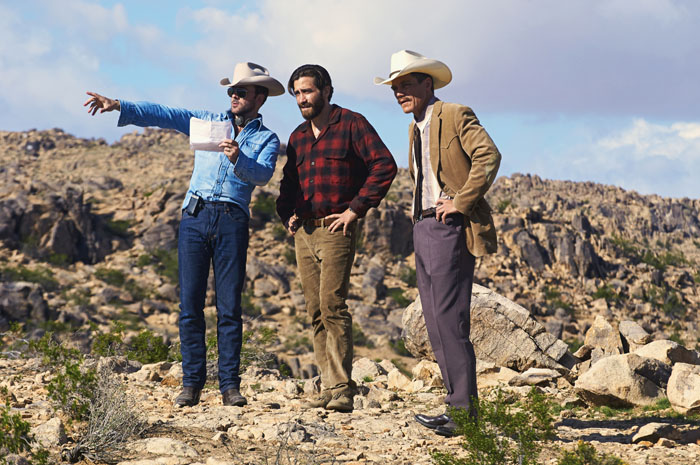
(l-r.) Writer/Director Tom Ford and Academy Award nominees Jake Gyllenhaal and Michael Shannon review a scene on the set of the upcoming romantic thriller NOCTURNAL ANIMALS, a Focus Features release.
Credit: Merrick Morton/Focus Features
Hullfish: One of the things that I noticed was the intercutting at the beginning of the movie with the women that are dancing and the cloverleaves of traffic seen from above. Was there a point or did I miss or was it just an interesting and artistic?
Sobel: I think it’s all of the above. These are all such beautiful images. The opening….the naked women dancing is certainly challenging and daring. To me, they are absolutely beautiful and joyous and free. They are everything that Susan isn’t. When the movie opens and you see these women and you’re like “Whoa! Oh my goodness, who are these women dancing – they’re naked, they’re not model-skinny, and they are dressed in Americana?” And then these dancing women turn the tables on you, they are the ones judging you. To me they are like the witches in Macbeth. They are enticing you into this story, a complex, complicated, almost snake-like story that is going to ensnare you, much like those shots of the LA freeways , those snake-like almost menacing structures…. like cold blood flowing through veins. They convey Susan’s world, the cold LA world of luxury that she lives in, and how that can entrap you. It certainly drowns and smothers her. She lives her life as if entombed within a prison. Susan exists in her incredibly gorgeous house, but it’s like being sealed into a tomb.
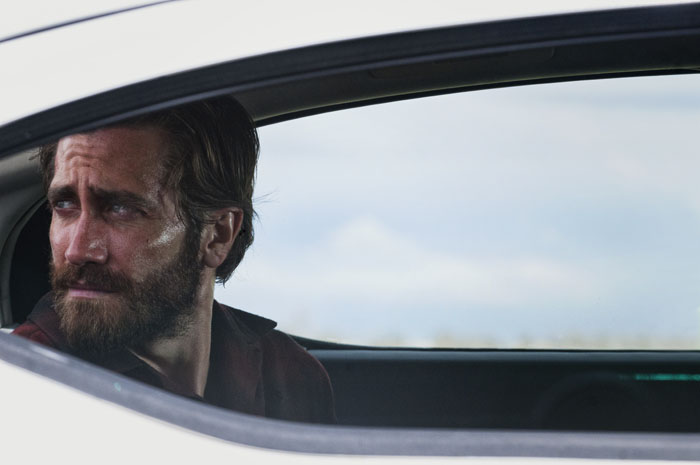
Credit: Merrick Morton/Focus Features
Hullfish: Her home and her work place are very dehumanized places.
Sobel: Yes. Cold, very, very cold.
Hullfish: I’m always interested in the objective of specific scenes. And one of the scenes that I was trying to figure out the objective for was – other than maybe some softening of Amy Adams’ character – What was the objective of the museum board meeting about firing the woman?
Sobel: It’s another look at Susan’s world….Susan’s world outside of her house. Susan is sleepwalking through her current life. She is physically placed into that harsh cold glaring light where she works. There’s no warmth there, no affection between any of those people that she works with. They all have those hard, sharp edges. Even their voices are sharp. I love Jenna Malone’s outfit in that scene with the sharp shoulders sticking out so that you don’t even want to get near her. She’s so prickly and everything is dismissed and dismissive. Susan’s emotions have now been revived and she finds herself flashing back to these warm visions of Edward/Tony, while being trapped into this superficial, cruel world. When she snaps to, she talks about what’s real and what isn’t real and the chance to correct one’s hurtful decisions, one’s wrong-headed decisions. There is also a lot of humor in this movie. I know it’s dark, but there is a lot of humor, dark as it may be. It’s always wonderful when I’ve watched “Nocturnal Animals” with an audience and they laugh! It’s very important to have those laughs.
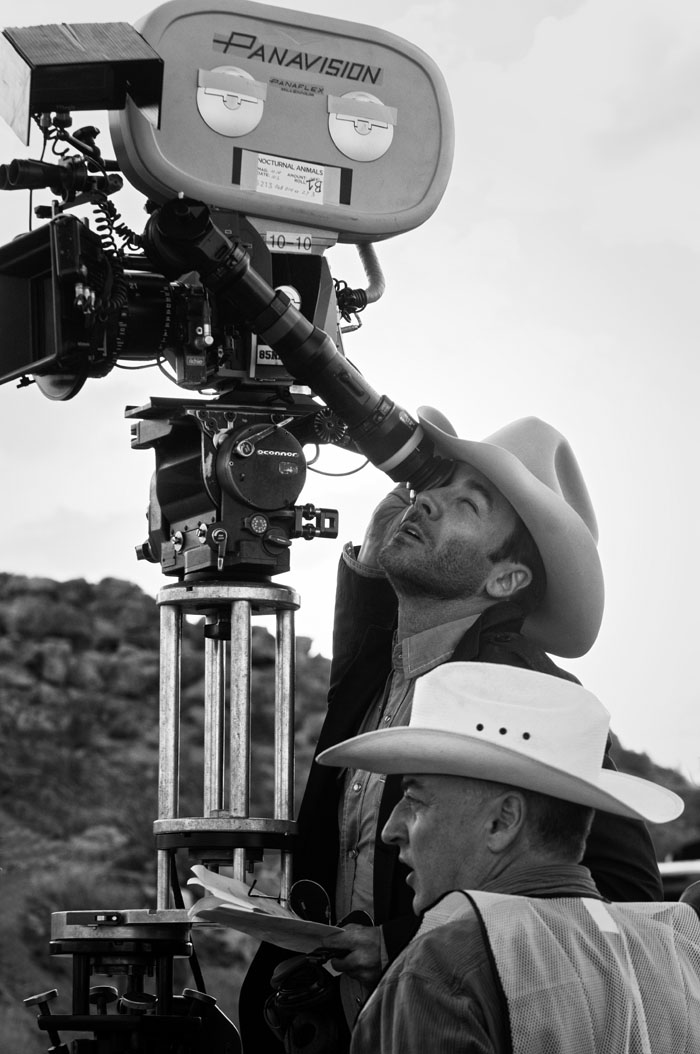
(l-r) Writer/Director Tom Ford sits behind the camera along with Cinematographer Seamus McGarvey on the set of their film NOCTURNAL ANIMALS, a Focus Features release.
Credit: Merrick Morton / Focus Features
Hullfish: What’s Amy Adams character’s final line in that, something about change right?
Sobel: Sometimes change is, isn’t the best, I can’t remember what the line is.
Hullfish: Yeah. A little bit of a statement about the woman’s plastic surgery.
Sobel: Yes, which the woman is denying that she’s had even though her face is almost encased in plastic. She was wonderful by the way, the woman who played that role (Kristin Bauer van Straten). She had to endure major prosthetics that were attached to her real face. And she kept laughing and she couldn’t laugh because she actually couldn’t move her face!
Hullfish: There’s a scene with Tony driving away I think before the whole, before he gets out into Texas, he’s driving away with his daughter, I think and wife in the car and I think there’s a couple of jump cuts in there. Talk to me a little about those jump cuts and obviously as an editor you’re always playing with time. You’re trying to expand it or contract it, so talk to me a little bit about that – the contractions…
Sobel: I think there are two jump cuts towards the end of that scene, where Tony and his family are getting into the car and starting their journey. These jump cuts aren’t about time passing. They are about fracturing the narrative. They are about letting the audience know that what you’re about to see is not quite what you think you’re about to see. They make you very aware…almost sit up and take notice that something is awry. One of my favorite cuts in the movie is at the very end of the scene with Amy Adams and Michael Sheen…the party scene that comes prior to this. That scene ends on a close up of Susan in full make-up…with her armor on, and then it cuts to her in the mirror with absolutely no makeup, stripped and vulnerable. And that is, in a way, another jump cut that grabs the audience’s attention and hopefully make them think,”wait something’s happening here.” With the car jumps cuts that you mentioned, those take place in the very first scene of the novel: Tony and his family pulling away from their suburban home in Texas and starting their typical family road trip. It’s all very normal, a very average scene: they’re packing the car, he’s having a typical interaction with his teenage daughter, his wife gets in the car and says “I shut the lights,” but then there’s a jump and then we cut to Amy again as if she’s turned the page to settle in to reading, and then we cut again and you enter into the novel and there’s something about it that says “something’s a little off here, something’s not normal.”
Hullfish: What is your inner clock telling you as you’re in the Tony part of the story? You’re trying to keep Amy reading the story alive at the same time right?
Sobel: Yes.
Hullfish: Were there times when you felt like “I need to be on Amy. We need to remember that she is experiencing this story and there’s a reason why she’s experiencing the story?”
Sobel: Some of it is absolutely written into the script, but it really is something that you have to have a rhythmic feel for, you have to instinctively feel when is the right moment to cut back to Susan. There is a long period of time where we don’t see Amy but, when we do, she comes back into the movie at exactly the right moment. Once we’re into the novel and we know that Susan has settled back to read, we are introduced to this fictional middle class family. The wife and the husband clearly love other, their daughter is a typically loving yet exasperating teenager and then they drive into the darkness of night. Almost instantly, they are in danger and the next time we see Amy is when the family has been forced off to the side of the road and Amy is rapidly breathing, almost exhaling, as the audience is exhaling from holding their breathe throughout that scene.
[Hullfish: Yep.
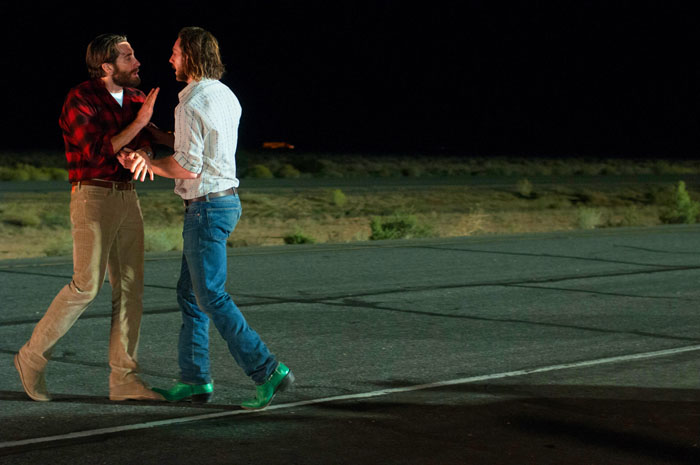
Sobel: And so when we cut back to Amy she’s trying to compose herself, by exhaling much as the audience is, only to then go into the second part of this scene, which is even worse. When Tony cannot save the abduction of his wife and daughter, and is held back and helpless as he loses them to Ray, we cut back to Amy slamming the book shut. You know, it’s very difficult to explain these things, to explain how one tells a story, because editors are the final story tellers. You just know when something is working and when you’ve found that golden moment that makes it all come together. Editing, to me, is an incredible creative endeavor. It’s an art rather than a science and yet I know that we’re a craft in many ways, but it’s a very artistic craft and a very creative craft. It is all about story telling and it is the final rewrite of the story done with visuals and sound and music.
Hullfish: Especially the intercutting of the two stories – the novel and then Amy Adams’s character reading the novel – I would think that that has to be one that’s executed with the correct feeling more in context?
Sobel: Yes.
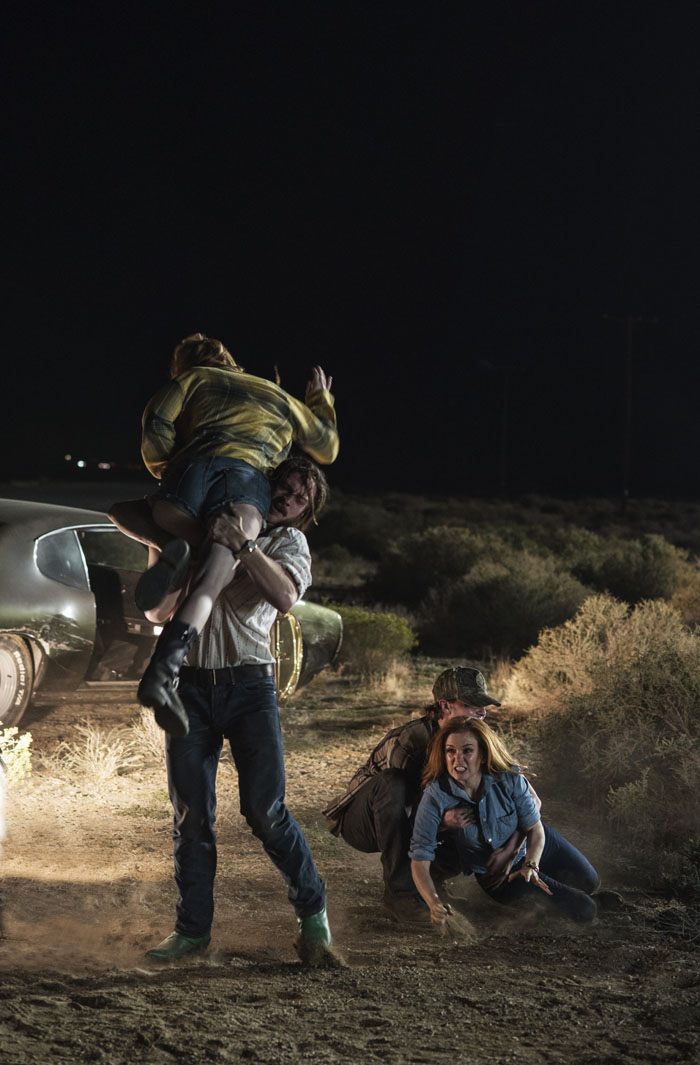
(l-r) Aaron Taylor-Johnson stars as Ray Marcus, Isla Fisher as Laura Hastings and Robert Aramayo as Turk in writer/director Tom Ford’s romantic thriller NOCTURNAL ANIMALS, a Focus Features release.
Credit: Merrick Morton/Focus Features
Hullfish: You had to wait until you could see the whole thing together and go “Oh we need to see Amy at this point or we need to stay with the story”
Sobel: Yes. And I again, in many cases it was inherent in Tom’s script, so those were very clear, but once the movie was together Tom and I would balance those transitions. We’d talk about needing to see Amy at this moment, and perhaps this transition needs to come over here as it is working better rhythmically and helping with the momentum, with the whole flow of the movie’s emotional ride, with the journey that you are taking the audience and your main characters on.
Hullfish: Do you know if the footage of her reading the book, was that actually shot per scene or was it a lot of various shots of her whenever you wanted and it wasn’t necessarily saved as a scene?
Sobel: It was more the latter. Some of it was specifically for a scene, for instance at the beginning when Susan first opens the novel. There are a couple of other places where we see Susan that were specifically shot for those scenes. But, mostly we combed through all of Amy’s footage and pulled moments that worked in certain areas. They weren’t necessarily shot for those scenes.
Hullfish: Sure. Joe Walker described Arrival the same way – all that intercutting with, if you’ve seen the movie, all the intercutting with going back to the flashback/flashforward life with her daughter – that was just shot as “Here’s daughter footage” except for a few specific scenes that were meant for an exact moment in the film.
Sobel: Right, yes. That’s the same.
Hullfish: I wanted to ask you about a cut to black with the cop car…
Sobel: There are a few cuts to black.
Hullfish: I’m interested in this cop car one. Talk to me a little bit about that and what was the thought process of putting that cut in there.
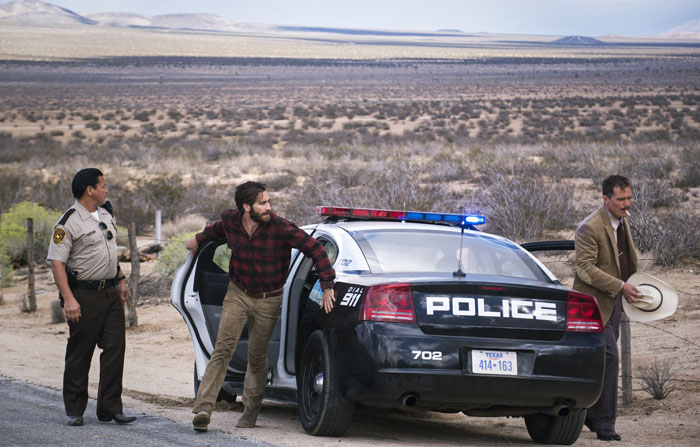
Credit: Merrick Morton/Focus Features
Sobel: The cuts to black are meant to be jarring. They take you out of the movie for just a second. They make you suddenly and absolutely aware that you are watching a movie. It’s almost complicit. They serve as a dialogue that is set up between filmmaker and audience, between author and reader. It’s about what happens when you blink at 24fps, or turn a page in a novel. It’s also about dividing the movie into sections without the use of chapter cards, instead using black, blank moments. These “black cards” much like chapter cards, are also about time passing. When the cop car takes off there is a certain amount of time that passes before they get to the fence that Tony recognizes. We’re going from the inside of the car and we are entering into a whole other sequence and a whole other location. Again, they signal that there is something different happening, something to make you sit up and take notice. We’ve used sound to accentuate, to make those moments almost dream-like.
Hullfish: Talk to me a little bit about temp music.
Sobel: Firstly, I never cut to temp music, I mean I never put temp music in and then cut the picture to it. I feel that you don’t get a sense of the cut, of the rhythm of a cut if you do that. Once you have the rhythm of the cut, when you place the right piece of temp music under it, I find that it usually lays in so beautifully, because the cut itself is already rhythmically correct.
Hullfish: Yep, that just happened to me yesterday. You put a temp piece in and you almost have to, I almost wanted to tell the director “I didn’t cut this to music, I cut it and I put this temp in and it just works.”
Sobel: I have that happen all the time. There are so many times when Tom and I are in the cutting room and we’ll place a piece of temp music in and then we look at each other and say, “Oh my god, it’s perfect!” We often don’t even have to put an edit into it. Normally I do place temp music into my editor’s cut. I really love to place music but, that can be a double-edged sword because if you do that and you’re not in tune with your director, you’re making such a strong and bold statement and there’s a chance that the director will not really see your cut, only hear that music. When I work with Tom I don’t put any temp music into the editor’s cut. That has always been Tom’s request not to place any temp in. I did place music under the opening title sequence with the dancing women, because I had to have music in to make it work as a montage.
Hullfish: There’s dancing.
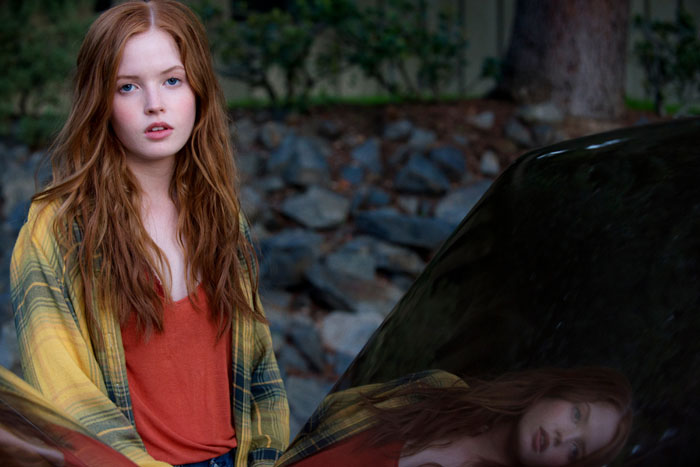
Sobel: But, other than that sequence, Tom and I placed all of the temp music together. We actually didn’t place that much music in the movie. In fact, this movie played amazingly well without any music at all. We used music very judiciously and we actually would watch it with absolutely no music and it played extremely well. When we did place temp music, and again we did it very sparingly, we used Abel’s music that he had written for other movies or shows. We were very specific as to where we placed these cues and then Abel composed original music for those places.
Hullfish: That’s very interesting because I’ve talked to a bunch of editors who have said that they will always try to temp with the composer’s previous music.
Sobel: I try to do that because I think it’s helpful and then again, it can backfire because everybody, including myself, falls in love with the temp. You are often asking the composer to basically recreate a piece that he’s composed before and I don’t know a composer who would be happy with that scenario. So that’s another double-edged sword. Those temp pieces work so well because there are certain emotional moments that they’re hitting perfectly. It’s not necessarily the piece itself that is so perfect; it’s that the music is highlighting just the right moment, that it’s almost perfectly hitting those significant emotional beats. Hopefully, you get a great composer like Abel who can create a gorgeous cue that will bring even more to those moments.
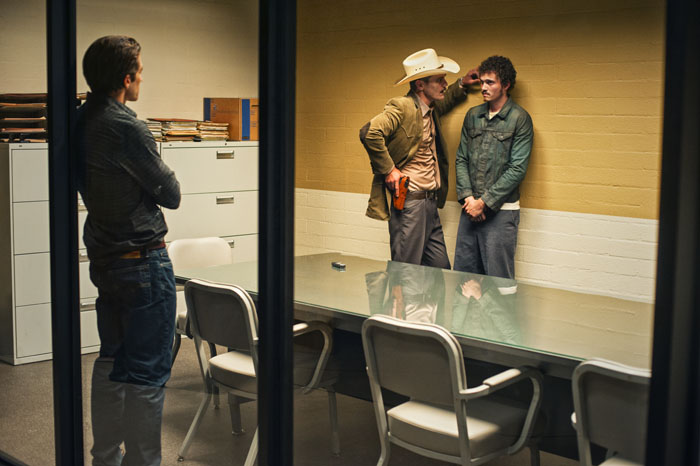
(l-r.) Academy Award nominees Jake Gyllenhaal and Michael Shannon star as Tony Hastings and Bobby Andes and Karl Glusman stars as Lou in writer/director Tom Ford’s romantic thriller NOCTURNAL ANIMALS, a Focus Features release.
Credit: Merrick Morton/Focus Features
Hullfish: You mentioned that the fact that you cut these pieces in after editing the picture and they work perfectly and I remember, I think it was Lee Smith that said, the composer came to him afterwards and said “Just so you know, you’re editing this scene at ninety-seven beats per minute.” Lee was just cutting intuitively and it worked out perfectly to ninety-seven beats per minute – every single beat landed exactly where the composer wanted it to.”
Sobel: There isn’t an editor worth their salt that doesn’t have an inner rhythm and there’s something playing in your head – there’s something that’s saying to you (snaps her fingers in rhythm).
Hullfish: You were snapping your fingers, but not like a director on a multi-cam show would say “Take camera one there.” But more like a metronome.
Sobel: Yes exactly. Just like a metronome.
Hullfish: There’s some great action in this movie, but you really needed to navigate a LOT of dialogue.
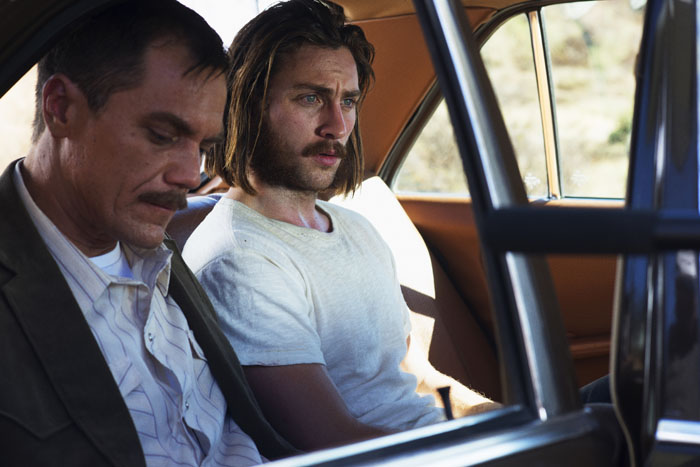
(l-r) Academy Award nominee Michael Shannon stars as Bobby Andes and Aaron Taylor-Johnson as Ray Marcus in writer/director Tom Ford’s romantic thriller NOCTURNAL ANIMALS, a Focus Features release.
Credit: Merrick Morton/Focus Features
Sobel: The action scenes in this movie were challenging to cut because they weren’t designed like most action movies where the scenes are very highly choreographed. The action scenes had to be completely created in the cutting room, and they are far more about the emotion conveyed than the action itself. I actually feel that the hardest thing in the world to cut is a dialogue scene. There are so many choices, so many paths to go down that could undermine or enhance a scene. It’s about being sensitive to performance, about getting the emotion right, about making those choices that make the movie flow, that leads the audience into and through this scene and into the next scene, and about how that scene impacts the audience and the rest of the movie. Dialogue scenes are so complex, so multi-layered. They constantly fascinate me.
Hullfish: The two dialogue scenes that you cut in this movie that I definitely liked were the one with Amy Adams and Jake on their first date and then the discussion with the mother about not marrying Jake. You have the subtext of what’s going on between them and also you have some perspective to see that the mother – as much as Amy doesn’t want to see it – the mother’s right.
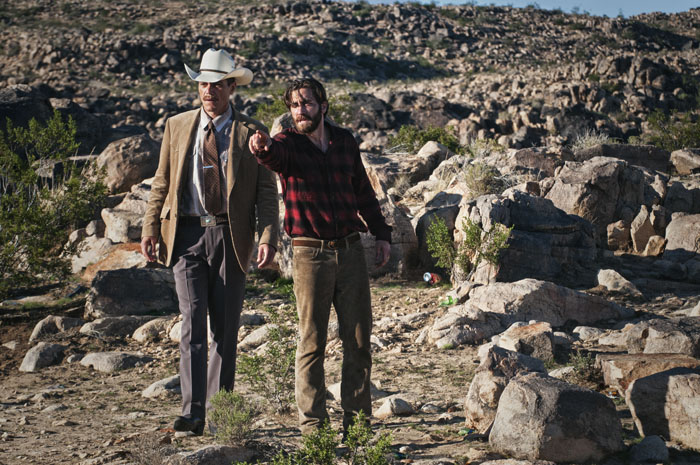
(l-r.) Academy Award nominees Michael Shannon and Jake Gyllenhaal star as Bobby Andes and Tony Hastings in writer/director Tom Ford’s romantic thriller NOCTURNAL ANIMALS, a Focus Features release.
Credit: Merrick Morton/Focus Features
Sobel: Yes, the mother’s actually correct in her assessments. There is a lot more to the mother than just being a one-dimensional portrait of evil. In many ways, the mother is the impetus, the core of Susan’s fight with herself. The mother is the core because that’s who Susan is constantly being drawn to or repulsed by, or saved from. That’s either the life that she’s going to choose or not choose. And in the end she chooses that life, she chooses to be her mother…all of the things that she hates. Laura Linney was amazing and the chemistry between Laura and Amy….the two of them together – that was the most joyful scene in the whole movie for me to cut. Getting to watch two top-notch professionals who clearly adored each other was a privilege. There was clearly a connection between both Laura and Amy. And what Laura gave in that scene – there was a subtlety to her performance. I can still remember when she says to Amy “Why do you always think the worst of me?” and there’s a poignancy that Laura brings into the performance, because Susan is purposely hurting her mother at that point. But then the mother goes back in for the kill. It’s a wonderful cat and mouse game that’s being played between the two of them and the mother is far stronger and crushes Susan. And Amy subtly conveys that with those small movements that she does solely with her face and her eyes and her mouth.
Hullfish: That scene to me really pointed out the wonderful collaborative nature of feature films in that the mother could have been so “cardboard.” Here is the hateful, cold mother and the loving daughter blah, blah, blah, but that’s not the way it plays out. And that’s the script, that’s your editing, that’s the performances, it’s the direction, it’s a little of everything to make it much more than a two dimensional scene.
Sobel: It’s the magic of movies. Those are the moments that we are in it for. It’s the passion that we feel for those moments and it’s what I was talking about at the beginning. Movies transport you and change you ever so slightly, just for a little bit, and you leave feeling differently. It won’t last, but you feel different. It’s almost like the molecules in you have been stimulated or altered, and that to me is the magic of movies.
Hullfish: Well on that beautiful note I want to say thank you for your time today.
Sobel: Thank you.
To read more interviews in the Art of the Cut series, check out THIS LINK and follow me on Twitter @stevehullfish

Filmtools
Filmmakers go-to destination for pre-production, production & post production equipment!
Shop Now